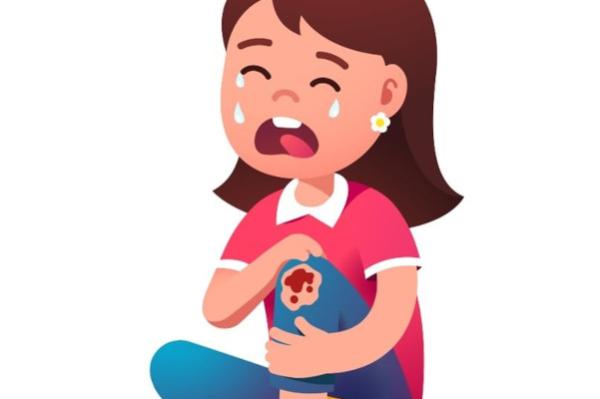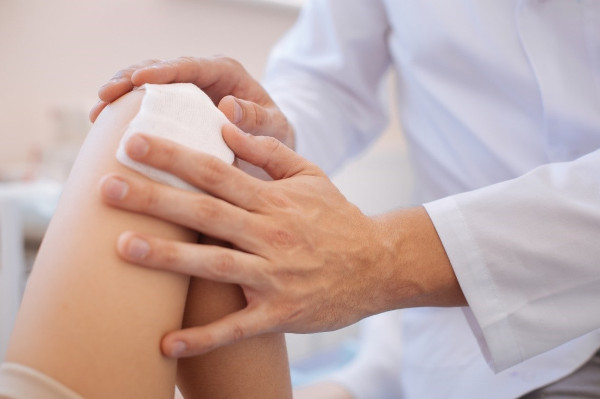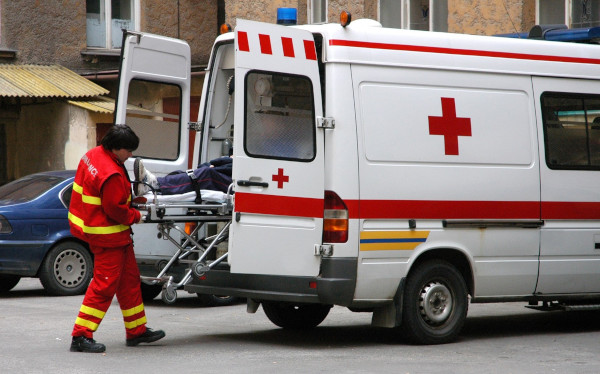Blog Post
Learn How to Treat Bleeding Wounds with First Aid Training

From your spouse accidentally cutting themselves while preparing dinner to a colleague gashing their leg on a sharp piece of metal in the workplace, bleeding wounds can happen spontaneously and it is best to always be prepared. In this brief guide, we outline the steps to take to treat a bleeding wound and highlight the risks you need to be wary of when offering first aid care to a person with a bleeding wound. Learn how to expertly treat bleeding wounds in any situation with EMCARE’s first aid training.
How to Treat a Bleeding Wound:
From a small cut to an open gash, all bleeding wounds need to be treated as serious injuries and receive immediate first aid care. If you are faced with an injured and bleeding person, follow our four simple steps to expertly treat the bleeding wound.
1) Stop Bleeding:
The first thing you need to do when someone has a bleeding wound is to stop the bleeding. Using a clean cloth, sterile gauze, or a piece of clean clothing, create a thick bandage and firmly apply the bandage to the open wound to decrease the blood flow. If the injury is on a leg or arm, you can additionally elevate the limb to decrease the bleeding.

2) Clean the Wound:
For smaller wounds, you can clean the wound after the bleeding has decreased with clean water and an antiseptic spray. Do not attempt to clean the wound if the cut is deep, bleeding excessively, has jagged edges, or the bandage is difficult to remove from the wound.
3) Protect the Wound:
If you were able to clean the smaller wound, you then need to keep the wound protected against infection. Use an antibiotic cream on the wound and replace the sterilised gauze bandage daily to keep the wound clean and protected.
4) Call Emergency Medical Services:
Depending on the severity of the bleeding wound, you may need to call emergency medical services. If in doubt, it is always best to have a bleeding wound professionally assessed and treated. We have highlighted a few signs that you must call emergency services when treating a person with a bleeding wound.
- After 10 minutes of pressure, the bleeding still cannot be stopped.
- The wound is on the chest, face, abdomen, or near the main vein.
- The wound has jagged or flapping edges.
- Bleeding is severe or spurting.
- There is dirt or debris in the wound.
- The injury was caused by a rusted metal object.

Risks With Bleeding Wounds:
Bleeding wounds have risks for both the injured person and for you when offering first aid care. We have outlined the three main risks for the injured person and you to ensure that you can avoid any hazards whilst offering first aid care to a bleeding wound.
1) Shock:
Whether it is the trauma of the accident, the sight of blood, or excessive blood loss, a person with a bleeding wound is at risk of going into shock. Shock can be life-threatening, meaning that it is essential that you focus both on treating the bleeding wound and preventing the injured person from going into shock. We have included some steps to take to prevent the injured person from going into shock.
- Place in Shock Position: If conscious, place the injured victim on a level surface and elevate their legs above their heart by placing a towel, pillow, or clothing under their feet. Ensure not to add further trauma to the bleeding wound if you need to move the person.
- Ensure Warmth: To prevent shock, wrap the injured person in a blanket or coat to keep them warm. Hyperthermia is a risk when a person goes into shock, meaning that keeping them warm and comfortable is essential. Do not place the person in direct sunlight as this may exacerbate shock symptoms.
- Keep Them Calm: If conscious, keep the injured victim as calm as possible to avoid distress and disorientation. You can do so by speaking calmly and confidently to them that you have treated the bleeding wound or assuring them that professional help is on the way.

2) Infection:
Infection is a serious and potentially life-threatening risk for the injured person. Cleaning the wound with fresh water immediately after the blood has stopped flowing will assist in preventing the risk of infection. You should then have an emergency medical professional examine and clean the wound to ensure that infection does not occur.
3) HIV Transmission:
In South Africa, there is a prevalent threat of HIV/AIDS. If you are offering first aid care to a bleeding stranger, you should always be cautious against the transmission of HIV. If you have any open wounds, ensure these are securely wrapped before treating their bleeding wound to keep yourself protected.
Learn About Wounds and Bleeding in EMCARE’s First Aid Training:
Bleeding wounds are traumatic for the injured person and can be for you if you do not have the first aid training skills to offer expert first aid care. Ensure that you are prepared to assist any injured person with a bleeding wound with EMCARE’s first aid training. All of our first aid training courses will cover wounds and bleeding to provide you with the knowledge and skills to offer anyone this potentially lifesaving first aid care.
Our first aid training courses are offered by expert trainers who are fully qualified and have over 1000 hours of emergency services experience. This ensures that when you enrol in our first aid training, you will receive the highest quality of training that is practical and theoretical. You will walk away from our first aid training with the confidence that you can offer expert first aid care to a person with a bleeding wound.
Our first aid training is not only focused on bleeding wounds. In our range of first aid training courses, you will learn CPR, burns, fractures, head and spinal injuries, shock, emergency scene management, legal implications, and so much more. Our first aid training courses are designed to equip you to offer first aid care in any circumstances where an injured person needs assistance.

Confidently offer first aid care to someone with a bleeding wound with EMCARE’s first aid training.
GET IN TOUCH
There are a few ways to reach us below. Please feel free to contact us via phone, email or you can send us a message via the form provided and we will get back to you.




















